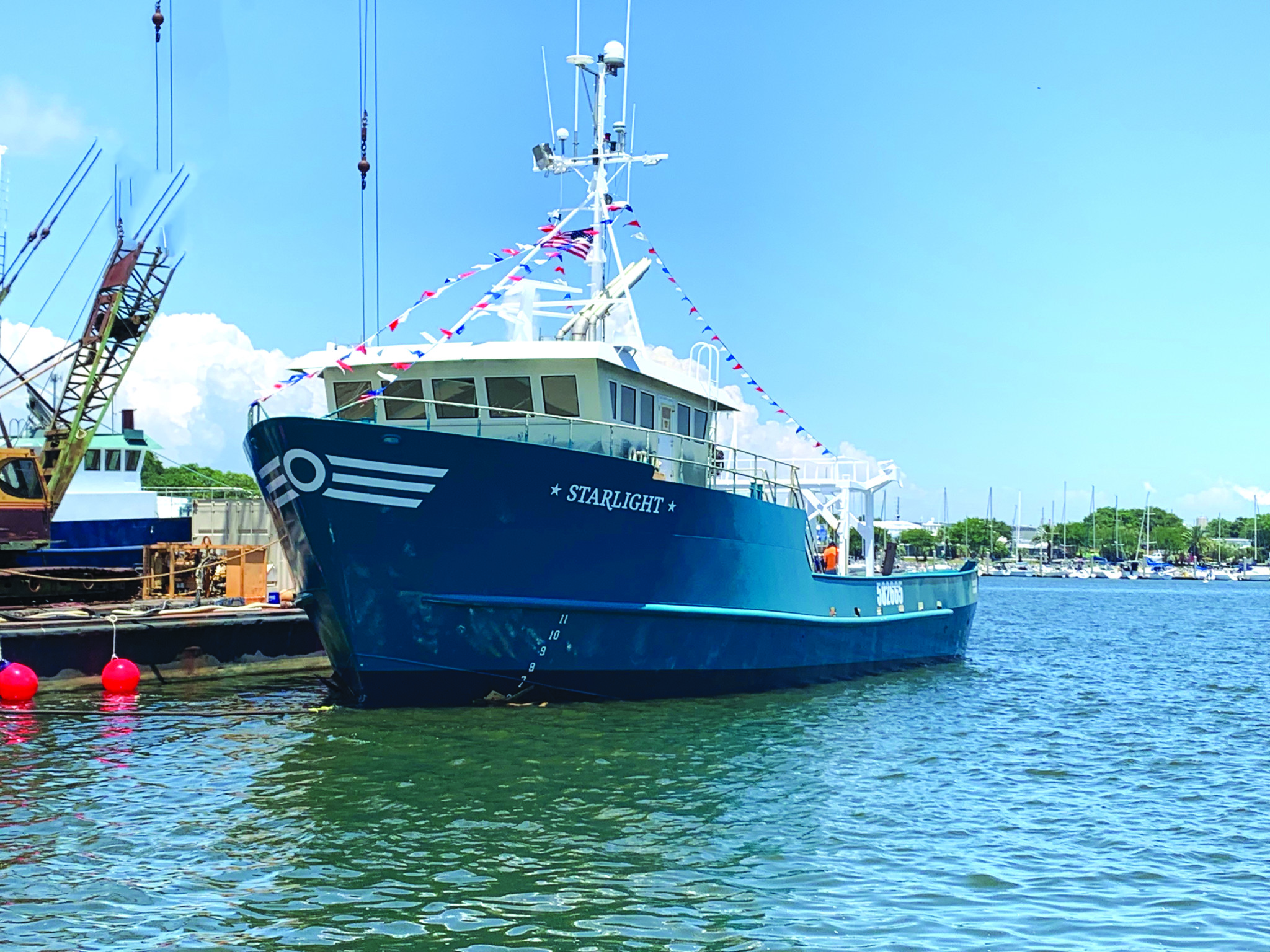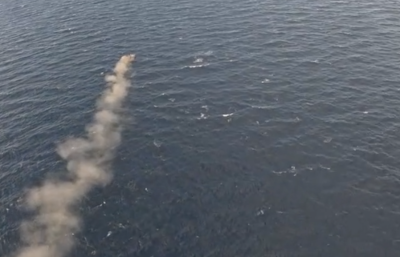O’Hara Lobster Bait’s midwater trawler Starlight gets a high-tech overhaul at Florida’s Patti Marine
In late June 2019, the F/V Starlight returned to Rockland, Maine, from Patti Marine in Pensacola, Fla. The O’Hara Lobster Bait midwater trawler had undergone a major overhaul. Most conspicuously, the yard had added a new wheelhouse and 10 feet to the original 24-foot beam of the 92-foot trawler. The Starlight, one of two midwater trawlers owned by the company, has been supplying the New England lobster fishery with bait for decades. But she looks like a brand new boat.

This story was first published in the October issue of National Fisherman. Subscribe today for digital and print access.
“We’ve been working on the idea for a couple of years,” says Paul York, the project supervisor for O’Hara Lobster Bait. “Mostly for stability reasons, and we wanted a bigger, safer boat.”
The Starlight was the first boat launched out of Eastern Shipyard in Panama City, Fla., “around 1977,” says York. According to York, Alfred Osgood, a famed Vinalhaven, Maine, herring fisherman, and his wife, Sharon, bought the boat in the 1990s, when herring stocks were abundant. The Osgoods then went into partnership with O’Hara in the 2000s.
O’Hara has since run the boat and used it for midwater trawling and pair trawling for herring and other pelagic species in the Gulf of Maine, Georges Bank and the Mid-Atlantic bight. But the Starlight had been built in another era. Realizing it no longer met the needs of O’Hara Lobster Bait, the company decided on a major conversion.
“Tom Farrell and Garrett Norton are the naval architects who did the design,” says York. “We put it out to bid, and Patti came up with a proposal we liked. So we took her down over Thanksgiving [2018].”
As soon as the boat arrived, the crew at Patti’s started taking her apart, cutting away the bow back to frame 8 and big sections of steel above the waterline. They took off the wheelhouse and all the deck equipment: “Where the wheelhouse was nothing but marked wires and hoses at deck level,” says Roger Fedro, general manager at Patti Marine.
“Tom Farrell, the naval architect, came down here and looked at our capacities and what we were doing — he was already working with us on another project — and he recommended us for this one,” says Fedro. That Patti Marine got the boat back to Rockland in late June — 10 feet wider, with a new bow, and new wheelhouse — was a factor of teamwork, according to Fedro. “This is really a story of collaboration between the architect, the owners and us.”
Fedro notes that Farrell used some new technology that enabled the yard to work at maximum efficiency. “They scanned the entire hull when she was up in Maine, out of the water. Then they were able to create a very accurate 3-D model, and design all the sections.” The plan for the new work was to put the new bow on and hang the sponsons in three sections on each side. Farrell sent the yard the nesting tapes — cutting files — for the sections so that work began weeks before the Starlight arrived.
“We started prefabbing everything,” says yard owner Frank Patti Jr. “We had the bow made up and were cutting for the three side sections.” Farrell’s work was so precise, notes Patti, that they were able to hang the sponsons “without any green,” as they say.
To read the full article, subscribe to National Fisherman today for digital and print access.







